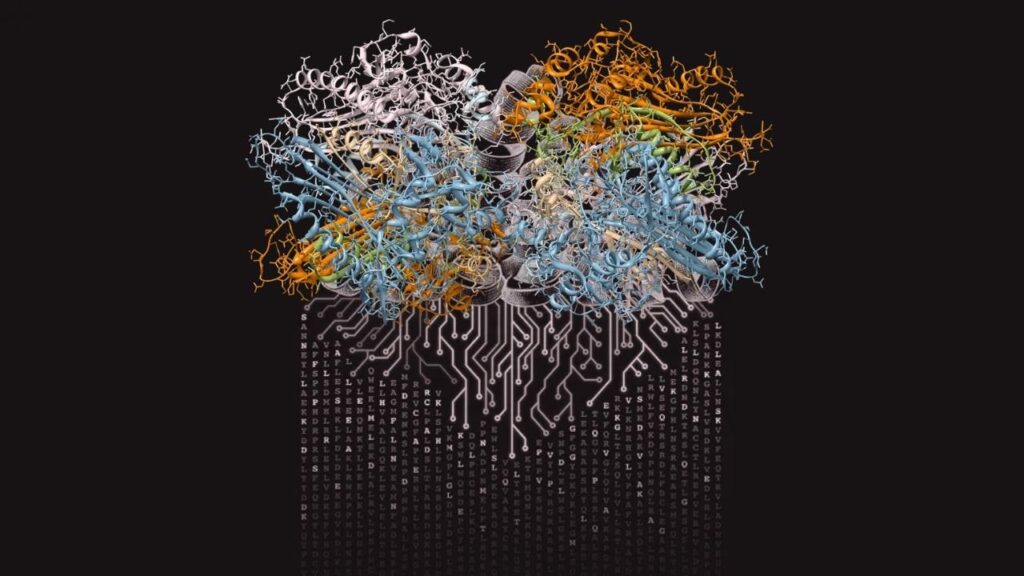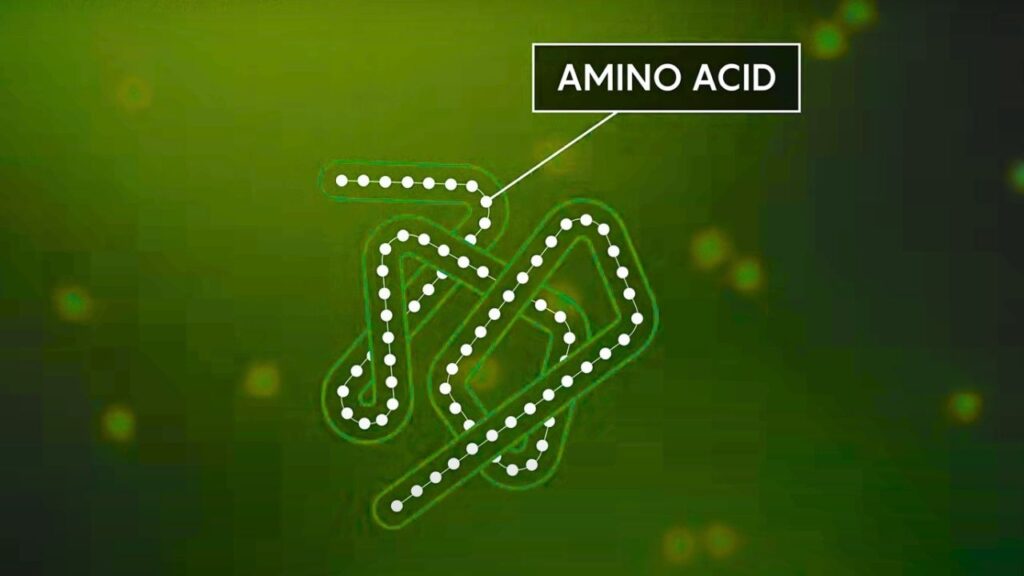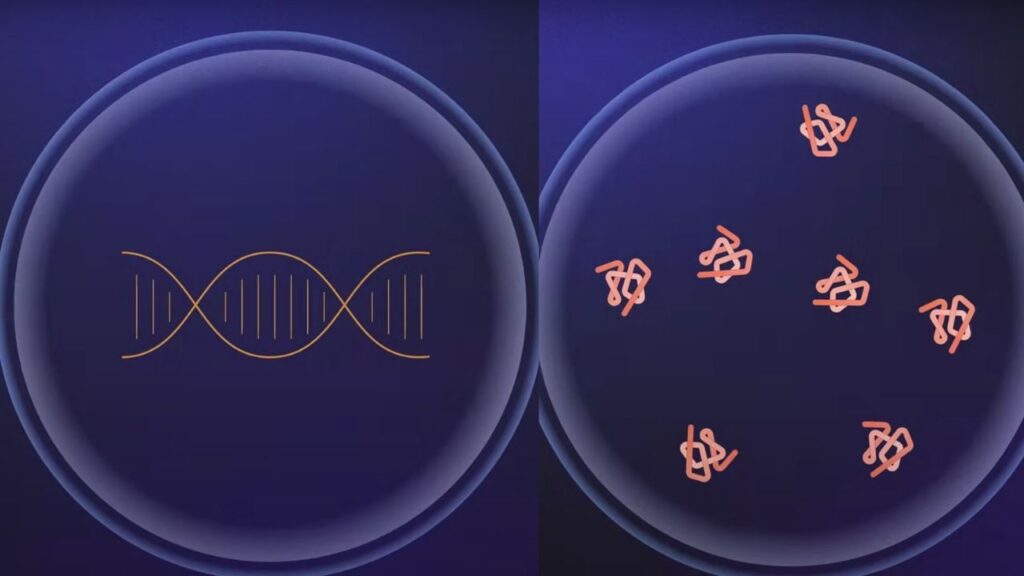AI Helps Decode Hard‑To‑Read Proteins: Artificial intelligence (AI) is rapidly transforming the world of science, and nowhere is this more evident than in the field of protein research. The keyword AI helps decode hard-to-read proteins, boosting biological research captures a revolution that is making the invisible visible, unlocking mysteries that have puzzled scientists for decades.

Today, AI-powered tools are helping researchers identify, understand, and design proteins faster and more accurately than ever before, paving the way for breakthroughs in medicine, biotechnology, and beyond.
AI Helps Decode Hard‑To‑Read Proteins
| Feature/Fact | Details & Stats | Career/Professional Impact |
|---|---|---|
| AI-Driven Protein Structure Prediction | AlphaFold3 predicts protein structures, including complexes; database of 200+ million proteins | Accelerates drug discovery, structural biology, and protein design |
| Enhanced Peptide Identification | InstaNovo identifies 42% more peptides than traditional methods | Improves immunotherapy, diagnostics, and microbiome research |
| Rapid Functional Protein Mining | New AI methods pre-filter massive datasets in seconds | Saves computing time, enables discovery of novel gene-editing proteins |
| Evolution-Inspired Protein Engineering | EvoRank leverages natural protein variations to design better proteins | Enables safer, more effective therapeutics and vaccines |
| AI in Personalized Medicine | AI models map 10x more sequences, improving diagnosis and treatment | Empowers precision medicine and cancer immunology |
AI is helping scientists decode hard-to-read proteins, boosting biological research in ways that were unimaginable just a few years ago. From predicting protein structures in seconds to discovering new therapeutic targets and designing better medicines, AI is unlocking the secrets of life’s most complex molecules. By embracing these tools, researchers and professionals can accelerate discovery, improve healthcare, and shape a healthier future for all.
Understanding Proteins: The Building Blocks of Life
Proteins are like tiny machines inside every living thing. They help build our muscles, fight off germs, and even let us feel hungry or happy. But figuring out exactly what each protein does, how it looks, and how it works is a huge challenge. Some proteins are easy to study, but many are so complicated or rare that scientists call them “hard-to-read proteins.”
For years, researchers have tried to decode these mysterious proteins using traditional methods like X-ray crystallography or mass spectrometry. These techniques are powerful, but they’re also slow, expensive, and sometimes can’t handle the trickiest proteins at all.
How AI Is Changing the Game
1. AI Predicts Protein Structures in Seconds
One of the biggest breakthroughs came with the development of AI models like AlphaFold. This tool uses deep learning to predict the 3D shape of proteins from their genetic code. Before AlphaFold, figuring out a protein’s shape could take years. Now, AI can do it in seconds, and with stunning accuracy.
AlphaFold3, released in 2024, can even predict how proteins interact with each other or with drugs, opening up new possibilities for designing medicines and understanding diseases. The database of predicted protein structures is now over 200 million strong, freely available for academic research, and used by scientists worldwide.
Example: Imagine trying to solve a 10,000-piece jigsaw puzzle without a picture on the box. AI gives scientists the picture, making the puzzle much easier to complete.
2. Finding Hidden Proteins and Peptides
AI isn’t just about shapes. New algorithms like InstaNovo and Casanovo can identify proteins and small protein pieces (peptides) that traditional methods miss. These tools can find 42% more peptides than older techniques, helping researchers discover new targets for cancer immunotherapy and diagnose diseases more accurately.

Example: In personalized cancer treatment, AI can find unique protein markers on a patient’s tumor, helping doctors tailor therapies that teach the immune system to attack only the cancer cells.
3. Mining Massive Data for New Discoveries
Modern biology produces mountains of data. AI helps scientists sift through these massive datasets in seconds, picking out which proteins are most interesting or important to study. This rapid functional protein mining saves time, money, and computing power, and lets researchers focus on the proteins that matter most for health, agriculture, or the environment.
Example: A team at the Innovative Genomics Institute used AI to quickly find new CRISPR-associated proteins, which are now being explored for gene editing and disease treatment.
4. Learning from Nature: Evolution-Inspired Protein Design
AI models like EvoRank are trained on millions of protein sequences from nature. By learning how evolution has “tweaked” proteins over millions of years, these models can suggest new ways to engineer proteins for vaccines, medicines, or industrial uses. This approach helps scientists design proteins that are both effective and safe, even when there’s not much experimental data available.

Example: Researchers at the University of Texas at Austin used EvoRank to improve a protein used in making mRNA vaccines, making the process more efficient and less toxic.
Step-by-Step Guide: How AI Decodes Hard-to-Read Proteins
Step 1: Collect the Data
Scientists gather genetic information (DNA or RNA) and protein samples from living things. These are stored in huge databases.
Step 2: Feed Data into AI Models
AI tools like AlphaFold, InstaNovo, or EvoRank are trained on this data. They learn patterns from millions of known proteins.
Step 3: Predict Structure and Function
The AI predicts what the protein looks like, how it folds, and what it might do in the body.
Step 4: Validate Predictions
Researchers test the AI’s predictions in the lab, using experiments to confirm the protein’s structure and function.
Step 5: Apply the Knowledge
Once validated, these insights help scientists design new drugs, create better vaccines, or understand diseases at a molecular level.
Practical Advice: How Professionals Can Leverage AI in Protein Research
- Stay Updated: Follow major AI developments in protein science, such as updates from DeepMind, Stanford HAI, and leading journals like Nature and Science.
- Use Open Databases: Access free resources like the AlphaFold Protein Structure Database for research and education.
- Collaborate Across Fields: Team up with computer scientists, biologists, and chemists to make the most of AI-powered tools.
- Invest in Training: Learn the basics of machine learning and bioinformatics to better understand and apply these technologies.
- Focus on Translational Research: Use AI insights to move discoveries from the lab to real-world applications, such as new medicines or diagnostics.
Quantum Materials: The Discovery of the Year for 2025
PsiQuantum Study Reveals Roadmap For Loss-Tolerant Photonic Quantum Computing
FAQs About AI Helps Decode Hard‑To‑Read Proteins
What are “hard-to-read” proteins?
These are proteins that are difficult to identify, sequence, or study using traditional laboratory methods. They may be rare, unstable, or have unusual structures.
How accurate are AI predictions for protein structures?
AI models like AlphaFold have achieved accuracy levels comparable to experimental methods for many proteins, with some predictions even outperforming traditional techniques.
Can AI replace laboratory experiments?
No. While AI can predict and suggest, laboratory validation is still essential to confirm results and ensure safety.
How does AI help in drug discovery?
AI can quickly identify protein targets, predict how drugs will bind to them, and suggest modifications to improve effectiveness, speeding up the drug development process.
Are these AI tools available to everyone?
Many AI tools and databases, such as AlphaFold, are freely available for academic and non-commercial use, democratizing access to cutting-edge science.
What skills are needed to use AI in protein research?
A background in biology, bioinformatics, or computer science is helpful. Many tools are user-friendly, but understanding data analysis and machine learning basics is valuable.
The Future: What’s Next for AI and Protein Science?
The pace of innovation is breathtaking. As AI models become smarter and more accessible, we can expect:
- Even faster and more accurate protein predictions.
- Discovery of entirely new classes of proteins with unique functions.
- Personalized medicine tailored to an individual’s unique protein makeup.
- Cross-disciplinary breakthroughs, from sustainable agriculture to green energy.
The synergy between AI and biology is just beginning. As these fields continue to merge, the possibilities for improving health, understanding life, and solving global challenges are virtually limitless.






